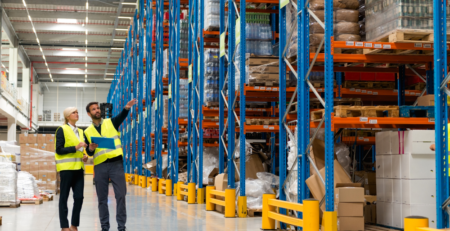How to Choose the Right Plastic Pallets for Hazardous Waste Transport
Plastic pallets are an excellent choice for hazardous waste transport because of their durability, ease of sanitation, and resistance to chemicals. However, not all pallets are created equal. There are a few things you need to consider when choosing plastic pallets for hazardous waste transport. In this article, we’ll go over those considerations and give you tips on how to choose the right plastic pallets for your needs.
Consider the Material
One of the first things you need to consider when choosing plastic pallets for hazardous waste transport is the material. There are four main types of plastic used in pallets: high-density polyethylene (HDPE), polypropylene (PP), polycarbonate (PC), and polyethylene terephthalate glycol (PETG).
HDPE is the most commonly used plastic for pallets because of its strength, durability, and resistance to chemicals. PP is also very durable and resistant to chemicals, but it is slightly less strong than HDPE. PC is a very strong plastic that is resistant to impacts and high temperatures, but it is not as chemical-resistant as HDPE or PP. PETG is a newer plastic that is very strong and chemical-resistant, but it is more expensive than the other three plastics.
Consider the Load Capacity
Another important consideration when choosing plastic pallets for hazardous waste transport is the load capacity. You need to make sure that the pallets you choose can handle the weight of your hazardous waste without breaking or becoming damaged.
Most plastic pallets have a load capacity of between 2,000 and 5,000 pounds. If you need to transport heavier loads, you may need to choose pallets with a higher load capacity.
Consider the Size and Weight
The size and weight of the plastic pallets you choose will also play a role in how suitable they are for hazardous waste transport. You want to make sure that the pallets are large enough to accommodate your hazardous waste containers but not so large that they take up more space than necessary.
Additionally, you want to make sure that the pallets are lightweight enough that they can be easily moved around, but not so lightweight that they become unstable when loaded with hazardous waste.
Consider the Design
The design of the plastic pallets you choose is also important. There are two main types of plastic pallets: nestable and stackable.
Nestable pallets are designed to fit inside one another when they are not in use, making them a great option for businesses that have limited storage space. Stackable pallets, on the other hand, are designed to be stacked on top of each other, which can save space in warehouses during storage.
Consider the Cleaning and Sanitation
Another important factor to consider when choosing plastic pallets for hazardous waste transport is how easy they are to clean and sanitize. Pallets that are used to transport hazardous waste need to be cleaned thoroughly to prevent contamination and ensure that they are safe for reuse.
Some plastic pallets have an open design that makes cleaning them easy, while others have a closed design that may make cleaning them more difficult.
FAQs:
Q: What is the maximum load capacity for plastic pallets?
A: Most plastic pallets have a max load capacity of between 2,000 and 5,000 pounds. However, some pallets can handle higher loads.
Q: Which plastic is best for hazardous waste transport?
A: High-density polyethylene (HDPE) is the most commonly used plastic for pallets because of its strength, durability, and resistance to chemicals.
Q: How do I know which size plastic pallet to choose?
A: You need to choose pallets that are large enough to accommodate your hazardous waste containers but not so large that they take up more space than necessary.
Q: Can plastic pallets be cleaned and sanitized?
A: Yes, plastic pallets can be cleaned and sanitized. However, some pallets may be more difficult to clean than others.
Q: Are there any regulations I need to follow when transporting hazardous waste on plastic pallets?
A: Yes, there are regulations set by the Environmental Protection Agency (EPA) that govern the transport of hazardous waste, including regulations related to the types of pallets that can be used. It is important to check these regulations before choosing plastic pallets for hazardous waste transport.
#Choose #Plastic #Pallets #Hazardous #Waste #Transport



Leave a Reply
You must be logged in to post a comment.